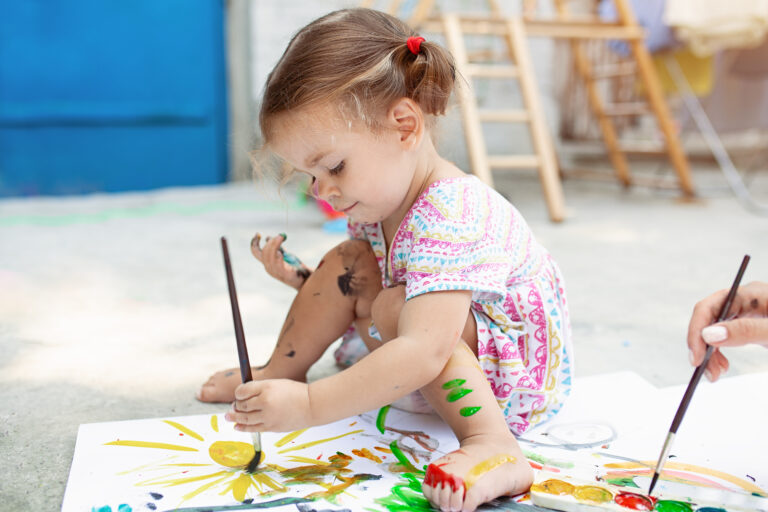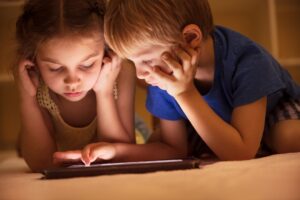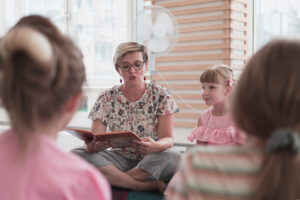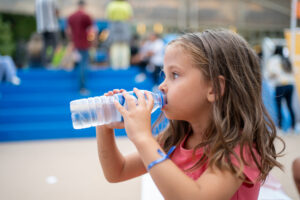In my years of nurturing young minds, I’ve learned the immense value of integrating art into daily learning.
Art not only unleashes creativity but also enhances fine motor skills, problem-solving abilities, and emotional expression.
Yet, one of the challenges I’ve faced is managing this within the constraints of a tight budget.
Let me share how I’ve navigated this, making art both affordable and impactful for my little artists.
Maximizing Resources
Creativity isn’t about the cost or brand of materials; it’s about the vision and the process.
Repurposing Everyday Items
I’ve discovered the magic of transforming everyday items into art supplies. Empty toilet paper rolls become the towers of castles, while old magazines morph into vibrant collages.
This approach has been my secret weapon, teaching children that creativity can flourish from the most mundane objects.
Bulk Buying Basics
In my work, I’ve found that investing in basic supplies in bulk—such as paper, glue, and primary colors of paint—can significantly reduce costs.
Mixing our own colors has not only saved money but also turned into a fun, educational activity for the kids, exploring the magic of color theory firsthand.
Leveraging Technology for Free Resources
I’ve embraced the digital world as a treasure trove of free resources. Online platforms offer countless printable coloring pages, art templates, and project ideas.
I often project digital art activities onto a screen, where we can all draw or paint along together. This method has allowed me to introduce diverse art concepts without the need for physical materials for every child.
Organizing a Supply Swap
I organized a supply swap event within our school community, inviting families to bring in and exchange art supplies they no longer needed.
This event not only refreshed our stock with an array of unexpected materials but also fostered a sense of community and sustainability among the families.
It’s been a delightful way to diversify our art supplies without incurring additional costs.
Creating a Classroom Material Library
I’ve developed a classroom material library, a collection of reusable items like fabric scraps, buttons, and yarn.
After each project, we sort and store materials that can be reused, teaching the children about recycling and resourcefulness.
This library has become a vital resource, inspiring endless creativity while underscoring the importance of environmental stewardship.
It’s a constant reminder that art can be both beautiful and sustainable.
Simple Yet Engaging Projects
The best art projects are those that captivate children’s imagination without requiring expensive materials.
Nature Art
I’ve personally tested the joy and learning that comes from incorporating nature into our art projects.
Collecting leaves, twigs, and stones to create nature collages or fairy houses has been a wonderful way to blend outdoor exploration with creative expression, all at no cost.
DIY Craft Dough
Making our own craft dough with kitchen ingredients like flour, salt, and water has been a hit. It’s inexpensive, safe, and offers endless hours of sculpting fun. Plus, it’s an engaging way to integrate sensory play into our art activities.
Shadow Drawing
I’ve introduced shadow drawing on sunny days, where we take toys, natural objects, or even ourselves outside and trace the shadows they cast on paper.
It’s a fascinating way for children to observe and interact with the natural world, and it turns a simple shadow into a canvas for their imagination.
This activity requires nothing more than paper and pencils or chalk, making it as cost-effective as it is engaging.
Recycled Material Sculptures
Inspired by the heaps of recyclables our community generates, I initiated a project where children create sculptures from items that would otherwise be discarded.
Plastic bottles, cardboard pieces, and fabric scraps have been transformed into imaginative creations.
This project not only emphasizes creativity and resourcefulness but also instills an early awareness of recycling and conservation in my young artists.
Homemade Storybooks
Encouraging the children to create their own storybooks has been a wonderful adventure. Using folded paper and basic drawing or writing tools, each child can illustrate and narrate their own stories.
This activity marries literacy with art, allowing children to express their thoughts and stories visually. It’s been incredibly rewarding to see their pride in sharing their homemade books with classmates, fostering not just creativity but also confidence and communication skills.
Fostering Creativity Over Perfection
In guiding young children through art projects, I’ve emphasized the process over the final product, focusing on the joy and learning that comes from creating.
Encouraging Exploration
I’ve seen how giving children the freedom to explore materials and ideas leads to profound moments of discovery and creativity. It’s not about the perfect picture; it’s about the story they tell through their art and the skills they develop along the way.
Celebrating All Creations
I’ve made it a point to celebrate every piece of art, no matter how simple or complex. This practice fosters a positive environment where children feel valued and motivated to express themselves, understanding that art is a personal journey, not a competition.
Practical Tips for Art on a Budget
Managing an art-rich curriculum on a budget requires creativity, planning, and a bit of resourcefulness.
Community Donations
I’ve tapped into the generosity of our community, requesting donations of art materials or recyclables.
You’d be surprised how many families have supplies they’re eager to contribute, from fabric scraps to old buttons and beads.
Digital Art Platforms
Incorporating digital art into our curriculum has allowed us to explore creativity without physical materials.
Free apps and websites offer a canvas for digital drawing and painting, introducing children to modern art forms while saving on supplies.
Collaborative Projects
Large, collaborative art projects have been a cost-effective way to engage the whole class with minimal materials.
A single large mural or a group sculpture can become a focal point of pride and teamwork, showcasing the collective creativity of the class.
Final Thoughts
In my journey in childcare, I’ve learned that art is an essential aspect of early learning, offering a unique window into children’s thoughts, feelings, and understanding of the world.
By embracing affordability and creativity, I’ve found ways to enrich our art program without stretching our budget thin. It’s a testament to the idea that when it comes to nurturing young artists, resourcefulness and imagination are our most valuable assets.
Through “Art on a Budget,” we not only teach children to express themselves creatively but also to see potential and beauty in the simplest things—a lesson that extends far beyond the canvas.












